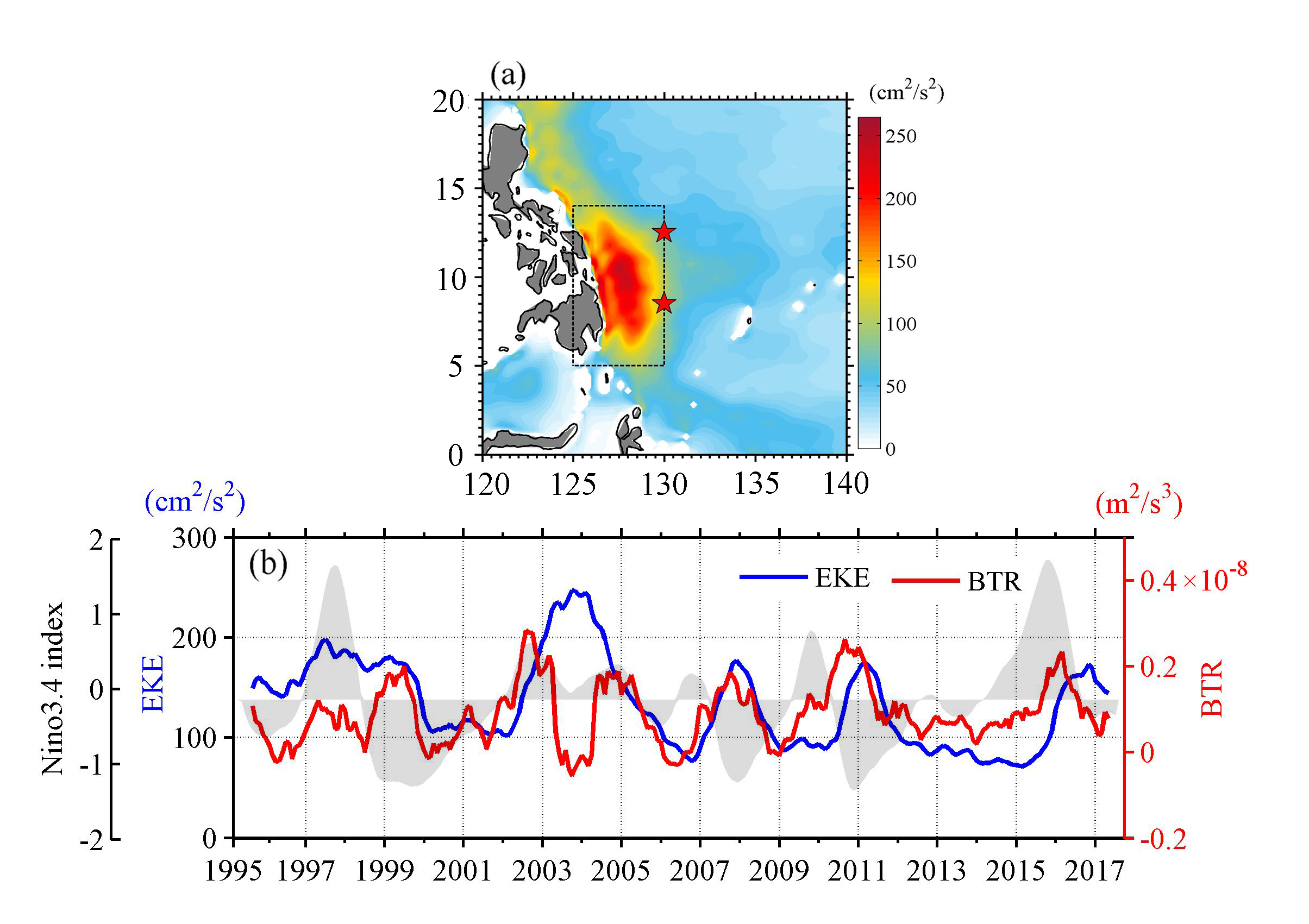Interannual Modulation of Subthermocline Eddy Kinetic Energy East of the Philippines
Yuchao Hui, Linlin Zhang, Zhenxiao Wang, Fan Wang, Dunxin Hu
Published in Journal of Geophysical Research: Oceans, May 2022
Interannual variation of subthermocline eddy kinetic energy (EKE) east of the Philippines is investigated based on mooring measurements during 2015–2019 and ocean-state estimates during 1995–2017 from the Oceanic General Circulation Model for the Earth Simulator (OFES). Prominent interannual variation of EKE is detected below the thermocline east of the Philippine coast, which is closely related to the El Niño and Southern Oscillation (ENSO) events and generally lags the Nino3.4 index by 14 months. Further energy diagnostic analysis indicates that the interannual variation of subthermocline EKE is controlled by both baroclinic and barotropic instability of the background flows and dominated by the barotropic instability especially. Barotropic instability in the southern part of the Philippine coast is associated with the subsurface component of the quasi-permanent anticyclonic Halmahera Eddy (HE), while that in the northern part is closely related to the Mindanao Undercurrent (MUC). Both HE and MUC are modulated by the ENSO events. When El Niño occurs, negative sea surface height anomalies appear near the dateline and propagate westward in the form of the first-mode baroclinic Rossby wave, exerting delayed impacts upon the western boundary currents east of the Philippine coast and further modulating the interannual variation of subthermocline EKE. Moreover, the barotropic energy conversion rate and its corresponding subthermocline EKE at lower latitudes respond relatively faster to ENSO due to the higher Rossby wave group velocity there.

Fig. (a) All-time mean subthermocline Eddy Kinetic Energy (EKE; 300–700 m; cm2/s2) calculated with 150-day high-pass-filtered velocity from OFES during 1995–2017. (b) The blue and red curves are the regional (5°–14°N, 125°–130°E) mean time series of subthermocline EKE and barotropic energy conversion rate calculated with OFES during 1995–2017, and the gray shading is Nino3.4 index. All curves have been smoothed with a 1-year low-pass filter
Hui, Y., Zhang, L., Wang, Z., Wang, F., & Hu, D. (2022). Interannual modulation of subthermocline eddy kinetic energy east of the Philippines. Journal of Geophysical Research: Oceans, 127, e2022JC018452. https://doi.org/10.1029/2022JC018452